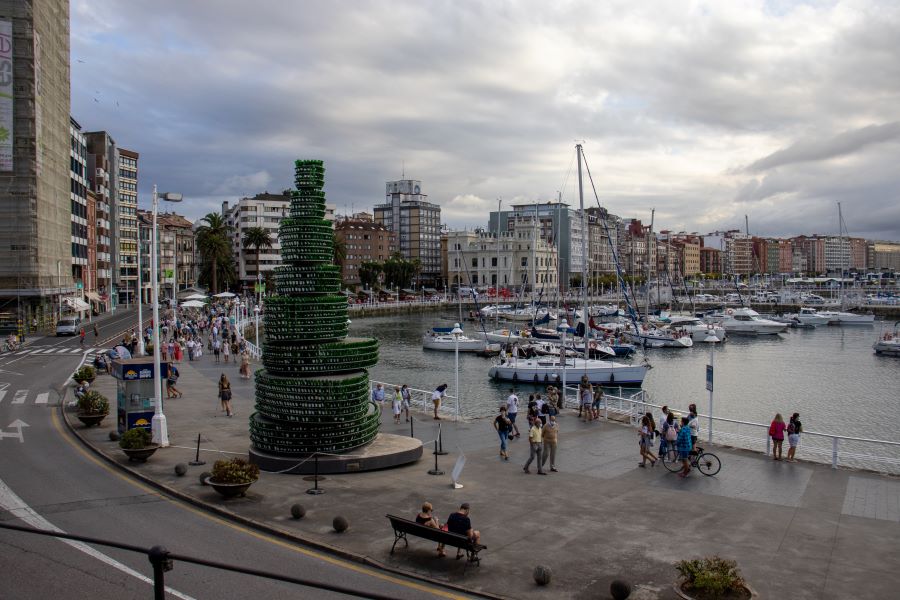The weather in the north and north-west of Spain is conducive to the growing of apples. No surprise then that Asturias produces delightful ciders to rival anything produced in France and England.
Asturias produces more than 55 million litres of cider every year, which equates to 80% of all the cider produced in Spain. But not much makes it out of Asturias! Around 90% of the drink made in Asturias is consumed there.
Cider is made throughout Asturias but the Comarca de la Sidra or Cider District is where it is traditionally made. The city with the most cider houses or sidrerías is Gijón, conveniently close to the comarca.

Tower made from cider bottles in Gijón
Types of Asturian cider
Asturian cider has its own protected designation of origin (PDO). Three different types are eligible for this PDO:
- natural cider (traditional)
- filtered natural cider
- sparkling natural cider
Traditional cider is made from the juice of one (or several) of the 22 varieties of apple permitted under the PDO label. It is the most popular Asturian cider in bars and restaurants across the region.
Cider makers ferment traditional Asturian cider in wooden barrels for several months. Next is the process of decanting, during which they get rid of as much sediment as possible and to ensure good blending.
It is during this time that friends and family enjoy the tradition known as Espichas or “first tastings”. Usual accompaniments are ham, sausage, bread, and Cabrales cheese while everyone drinks cider straight from the barrel.
After fermentation, and once the it has an alcohol content of 5-6 %, the cider is straight into the bottles without filtering.
Special pouring method

If you’ve seen the pouring method for traditional Asturian cider, you’ll remember it! What seems like a dramatic and theatrical display is actually necessary to aerate the cider, thereby unlocking the full flavour and natural aromas. However, it can get messy!
The cider is poured from a great height into a wide-mouthed glass. As the cider falls into the glass it hits the edge causing froth to form (espalmar). This ensures the correct degree of oxygenation and the cider is ready to drink in a generous sup (or gulp depending on your style). Called ‘culin’, this method of drinking also means there is a little left in the glass. The reason for this is, in pre-Covid days, the cider glass was traditionally shared. The remaining cider was to clean the glass for the next drinker.
Cider houses
When in Asturia, drink cider in a sidrería. Also known as chigres, they are in almost every Asturian town and city. Served alongside the cider is often tortillas, cheese, cod, chorizo and tripe dishes. For a truly authentic Asturian gastronomic experience, head to a chigre, sup the cider and enjoy a mouthful or two of the local dishes.


